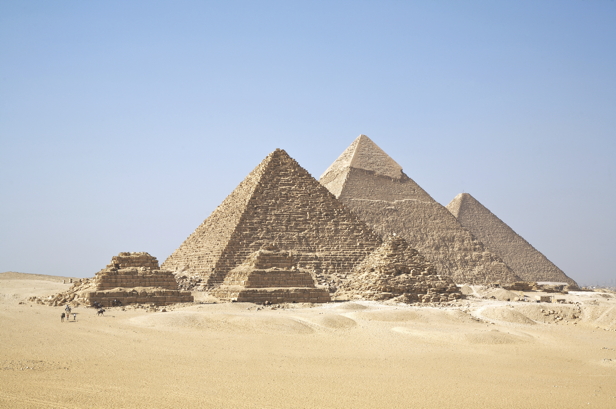Although Egyptologists have been studying the Great Pyramid of Giza for centuries, they haven’t yet reached a consensus on how it was built. Specifically, how were the massive two-ton blocks placed 147 metres (480 feet) above the desert floor? A French architect named Jean-Pierre Houdin formed a theory to explain the mystery. Houdin has devoted his time to studying the Great Pyramid and creating graphical models using 3D software.
Houdin believes that an external ramp was built to haul the rocks – pulled by means of ropes – for the first 60 metres (197 feet) or so of the pyramid. Then an internal ramp was built to continue hauling rocks up. It is a 1.6 kilometre- (one mile-) long narrow structure spiralling inside the pyramid much like the ramps in a parking garage. To allow for men to haul the stones, the ramp is at a seven per cent slope. Somehow it has remained hidden inside the pyramid since its completion 4,500 years ago.
However, how would men hauling the blocks up the ramp be able to make the turn at each corner of the ramp? They would need a place to stand in front of the blocks. Houdin believes that each corner was temporarily left open, with a notch of about three square metres (32 square foot). Wooden cranes were stationed in each of these open spaces to lift the blocks onto the next level of the ramp. Later the notches were filled in.
Houdin’s theory step-by-step
Step 1: The pyramid base
According to Houdin, the pyramid’s base was built using an external ramp until the base reached a height of about 60 metres. Workers then slowly broke down the external ramp and used its blocks to build the rest of the pyramid.
Step 2: Starting the internal ramp
As workers continued building the rest of the pyramid, they also built and used an internal ramp to haul the heavy blocks. This allowed them to build the pyramid from the inside out.
Step 3: Completing the pyramid
After the core of the pyramid was completed, workers filled in the corners that had previously held cranes. Egyptologist Bob Brier found one area on the pyramid’s exterior that may be evidence of one of these corners.
Step 4: A smooth surface
Originally the exterior of the pyramid was also covered with casing stones, which gave it a smooth appearance. Today only the core inner structure is visible.





